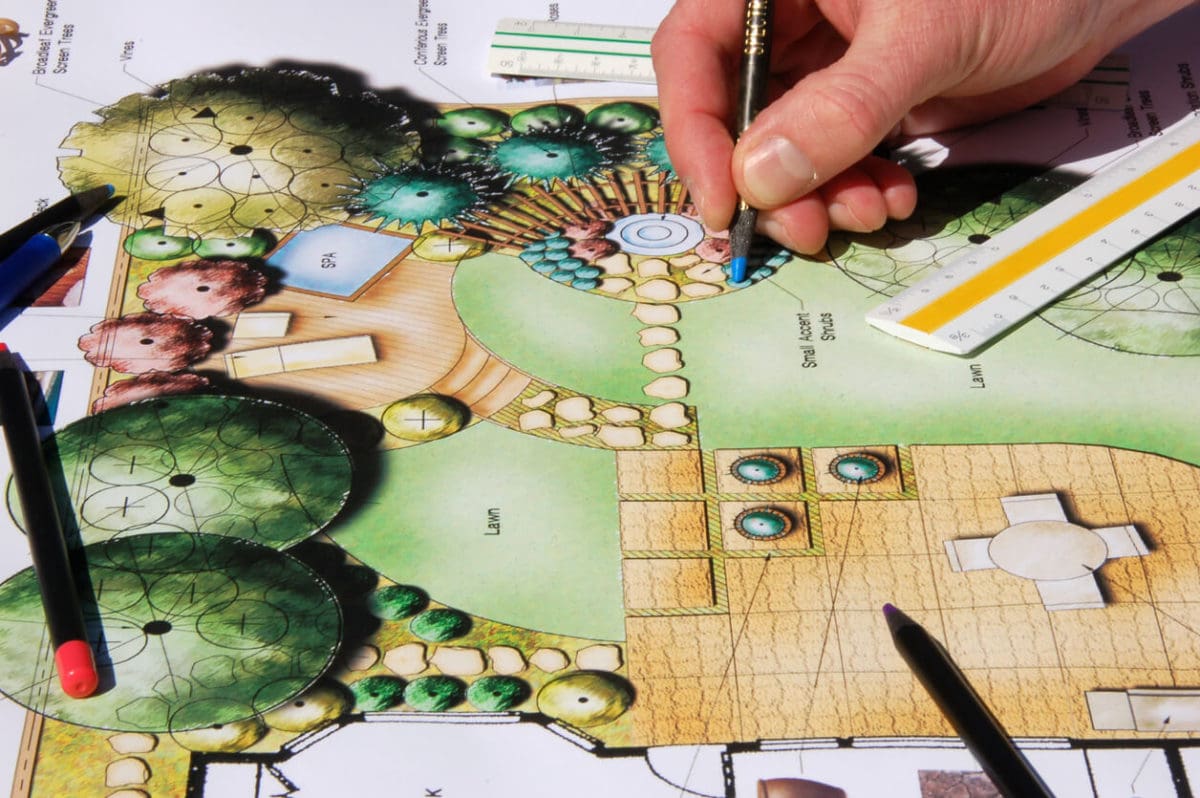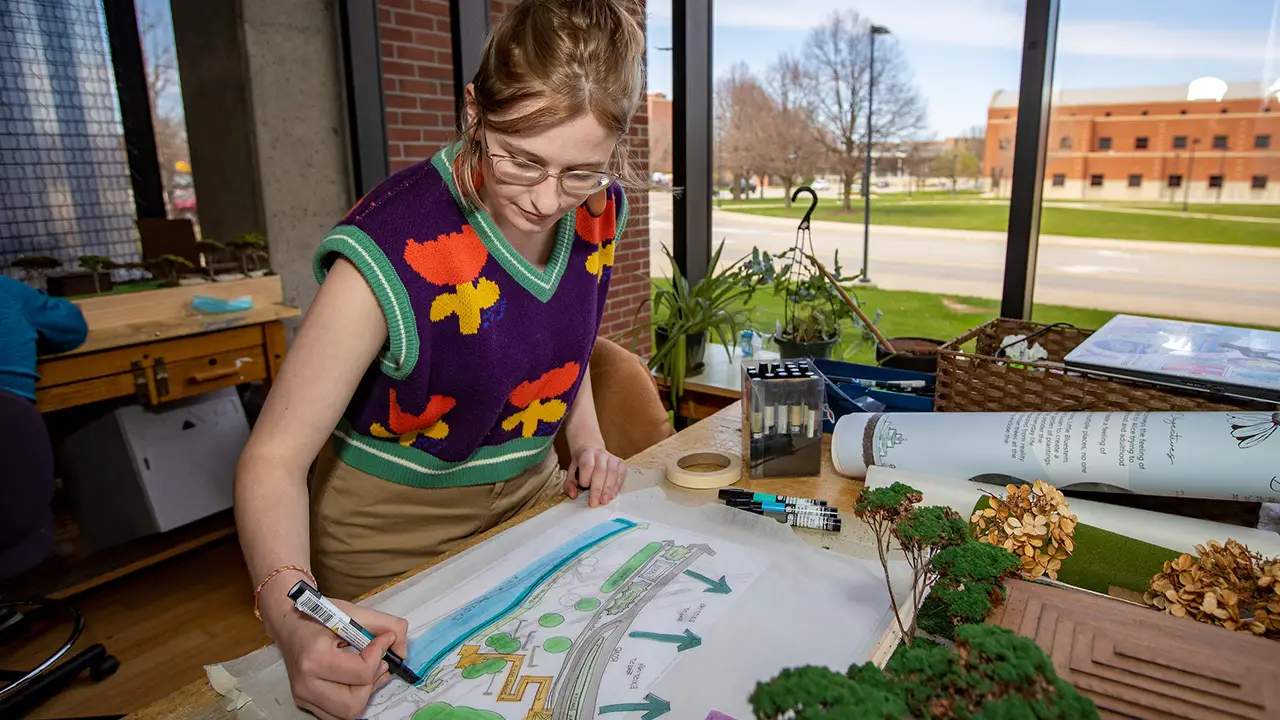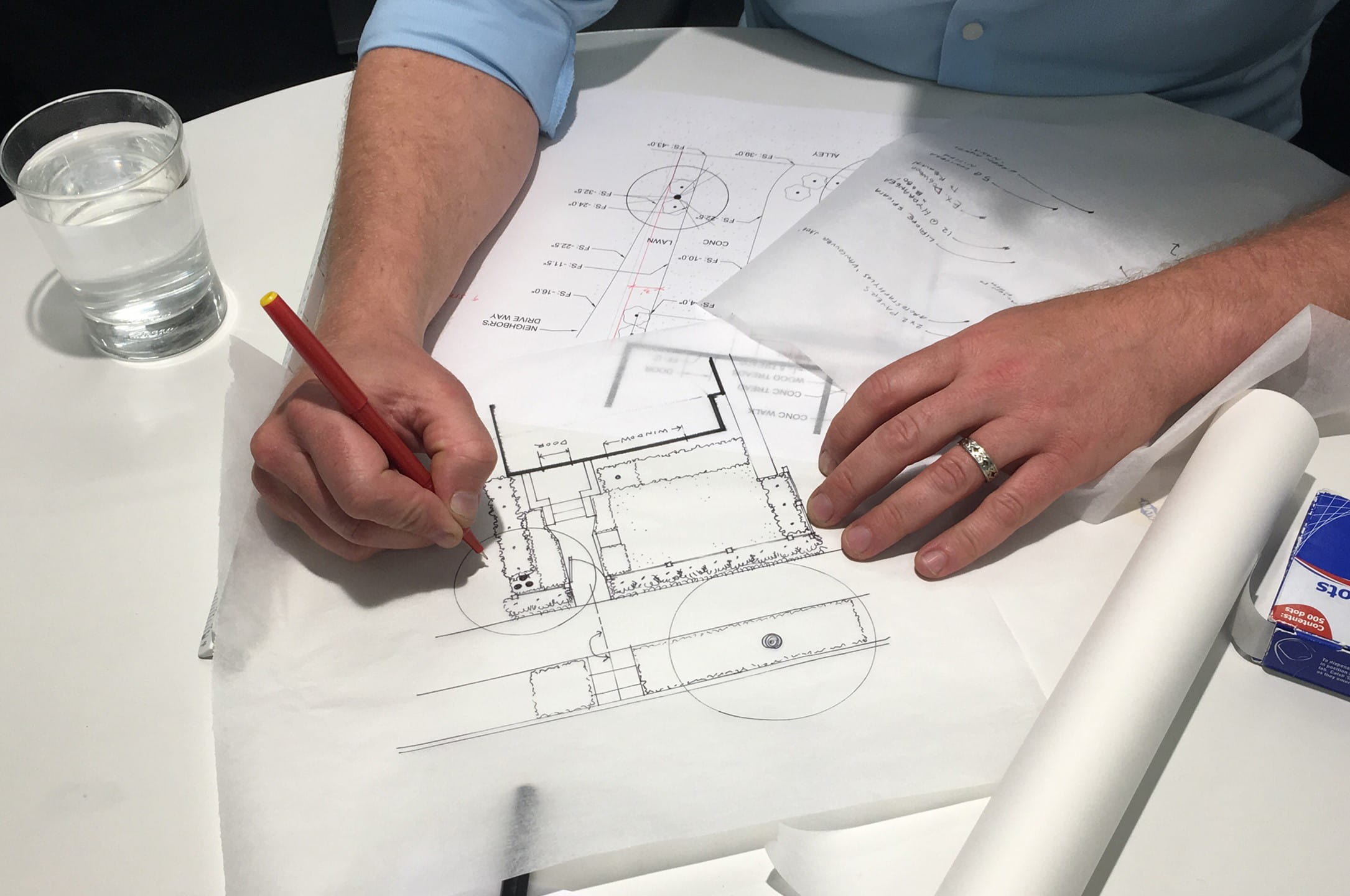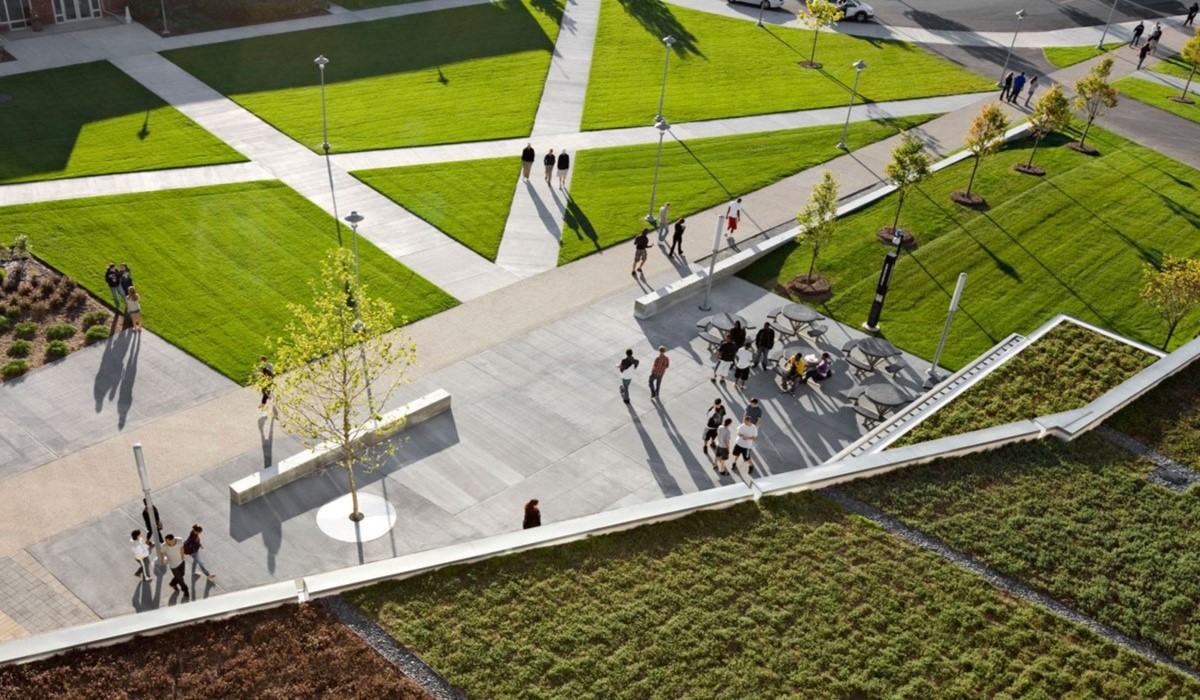Home>diy>Planning & Engineering>How Long Does It Take To Become A Landscape Architect?


Planning & Engineering
How Long Does It Take To Become A Landscape Architect?
Modified: October 20, 2024
Find out how long it takes to become a landscape architect and explore the planning-engineering pathway in this comprehensive guide.
(Many of the links in this article redirect to a specific reviewed product. Your purchase of these products through affiliate links helps to generate commission for Storables.com, at no extra cost. Learn more)
Introduction
Becoming a landscape architect requires a combination of educational training, professional experience, and licensing. Landscape architects play a crucial role in designing outdoor spaces that are not only aesthetically pleasing, but also functional and sustainable. They work on diverse projects, ranging from residential gardens and parks to commercial developments and public spaces. If you have a passion for creating beautiful outdoor environments and have an aptitude for design and planning, a career as a landscape architect may be the perfect fit for you.
In this article, we will delve into the educational and training requirements, professional experience, licensing and certification, as well as the time it takes to become a landscape architect. Whether you are a high school student considering a career path or a professional contemplating a career change, this article will provide you with valuable insights and guidance.
Before we proceed, it is essential to note that the specific requirements to become a landscape architect may vary from country to country. The information provided here is a general guide that applies to many regions. It is crucial to research the specific requirements in your area and consult with the relevant professional organizations and governing bodies.
Now, let’s explore the educational and training requirements to set you on the path to becoming a landscape architect.
Key Takeaways:
- The journey to becoming a landscape architect involves obtaining a Bachelor’s degree, pursuing a Master’s degree, gaining professional experience, and obtaining licensing and certifications. Continuing education is crucial for staying updated in this dynamic field.
- Landscape architects can specialize in areas such as sustainable site design, historic preservation, and urban design, showcasing their expertise and enhancing their career prospects. The field offers a rewarding opportunity to create sustainable and innovative outdoor spaces.
Read more: How To Become Landscape Architect
Education and Training Requirements
Becoming a landscape architect typically requires a combination of formal education and practical training. The goal is to equip aspiring professionals with the necessary knowledge and skills to design, plan, and manage various outdoor spaces.
To start your journey toward becoming a landscape architect, it is recommended to pursue a degree in landscape architecture from an accredited institution. Accredited programs ensure that you receive a comprehensive education that meets industry standards and prepares you for a successful career.
The two primary levels of education for landscape architects are a Bachelor’s degree and a Master’s degree or higher. Let’s delve into each level in more detail:
Bachelor’s Degree in Landscape Architecture
Obtaining a Bachelor’s degree in landscape architecture is a common starting point for aspiring landscape architects. These undergraduate programs typically take four to five years to complete, depending on the country and institution.
During your Bachelor’s degree studies, you will gain a solid foundation in landscape architecture theory, design principles, and technical skills. Coursework may include subjects such as landscape design, site planning, plant materials, environmental science, and computer-aided design (CAD).
Some programs also offer opportunities for internships or cooperative education, where you can gain practical experience working with professionals in the field. These experiences are invaluable for developing real-world skills and building a professional network.
Master’s Degree or Higher
While a Bachelor’s degree can provide a solid educational foundation, many landscape architects choose to pursue a Master’s degree or higher to further enhance their knowledge and expertise. A Master’s degree in landscape architecture is often required for advanced positions in the field, research opportunities, or specialization in a specific area.
Master’s programs typically take two to three years to complete, depending on whether you are pursuing a full-time or part-time study option. The coursework at this level delves deeper into advanced topics such as landscape ecology, urban design, sustainable practices, and landscape construction.
Moreover, Master’s programs may incorporate a research component where students can explore a particular aspect of landscape architecture in depth. This research can contribute to the development of new knowledge and innovation within the field.
It is important to note that some countries may require individuals to have a Master’s degree from an accredited program to be eligible for professional licensing. Be sure to check the specific requirements in your region to ensure compliance.
Now that we have covered the educational requirements, let’s move on to discussing the importance of professional experience for aspiring landscape architects.
Bachelor’s Degree in Landscape Architecture
Obtaining a Bachelor’s degree in landscape architecture is a crucial step in pursuing a career in this field. This undergraduate program provides a solid foundation in the principles and practices of landscape architecture, equipping students with the necessary knowledge and skills to design and plan outdoor spaces.
A Bachelor’s degree in landscape architecture typically takes four to five years to complete, depending on the country and the institution. Throughout the program, students receive a comprehensive education that combines theoretical coursework, design studio projects, and practical experiences.
The curriculum of a Bachelor’s degree in landscape architecture covers various subjects related to the field. Students learn about landscape design principles, site analysis and planning, plant materials and horticulture, environmental science, construction techniques, and computer-aided design (CAD).
One of the highlights of a Bachelor’s program is the studio component. Design studios provide students with hands-on experience in creating landscape designs and developing their creativity and technical skills. These studios typically involve individual and group projects, where students work on real-world scenarios and challenges.
In addition to design studios, Bachelor’s programs also incorporate theoretical courses to provide a solid understanding of the principles and theories that underpin landscape architecture. Students may study subjects such as landscape history, urban planning, ecology, sustainability, and landscape management.
Many Bachelor’s programs also offer opportunities for internships or cooperative education. These experiences allow students to gain practical experience in professional settings and develop industry connections. Working alongside experienced landscape architects provides invaluable insights into the day-to-day responsibilities of the profession and helps students refine their skills.
Accredited Bachelor’s programs in landscape architecture ensure that students receive a comprehensive education that meets industry standards. These programs are designed to strike a balance between theoretical knowledge and practical skills, preparing students to tackle real-world challenges and contribute to the field of landscape architecture.
Upon completing a Bachelor’s degree in landscape architecture, graduates typically have a solid understanding of the principles, theories, and technical aspects of landscape design. However, it is essential to note that professional development and continuous learning are crucial in this field. Many landscape architects choose to pursue advanced degrees or gain additional certifications to specialize in specific areas or stay updated on the latest trends and technologies.
Now that we have covered the educational requirements and qualifications, let’s move on to discussing the importance of professional experience for aspiring landscape architects.
Read more: How To Become A Landscape Architect In Texas
Master’s Degree or Higher
A Master’s degree in landscape architecture is often pursued by those who want to enhance their knowledge and skills in the field, specialize in specific areas, or pursue advanced positions and research opportunities. While a Bachelor’s degree provides a solid foundation, a Master’s degree offers a deeper understanding of landscape architecture principles and practices.
Master’s programs in landscape architecture typically take two to three years to complete, depending on the country and the institution. These programs build upon the knowledge gained during the undergraduate level and delve deeper into advanced topics and research.
The coursework at the Master’s level covers a wide range of subjects, including landscape ecology, urban design, sustainability practices, advanced planning and design theories, and landscape construction techniques. Students engage in critical analysis of landscape issues and explore innovative design solutions.
One of the notable aspects of a Master’s program is the research component. Students may have the opportunity to conduct research on specific landscape architecture topics or explore cutting-edge ideas and approaches. This research not only expands the body of knowledge within the field but also allows students to develop critical thinking and problem-solving skills.
Master’s programs also provide opportunities for specialization in specific areas of landscape architecture. Students can choose elective courses or concentrations in areas like urban design, cultural landscapes, ecological restoration, or sustainable design. Specializing in a particular area can enhance career prospects and open doors to more specialized roles within the field.
Moreover, many Master’s programs offer internships or cooperative education experiences, allowing students to gain practical experience in real-world settings. These opportunities provide valuable insights into the profession and allow students to develop their professional skills and network with industry professionals.
Completion of a Master’s degree in landscape architecture is often a requirement for certain advanced positions or for pursuing research and academic careers. It is important to note that the specific requirements for higher-level positions may vary depending on the region and the employer. However, having a Master’s degree can often provide a competitive edge in the job market and open up doors to more challenging and rewarding roles.
Continuing education and professional development are essential in the field of landscape architecture. Even after completing a Master’s degree, landscape architects should stay updated on emerging trends, new technologies, and sustainable practices. Attending workshops, conferences, and pursuing additional certifications can help professionals stay at the forefront of the industry and showcase their commitment to ongoing learning.
Now that we have covered the educational requirements and qualifications, let’s move on to discussing the importance of professional experience for aspiring landscape architects.
Professional Experience
While formal education provides the theoretical foundation and technical skills necessary to become a landscape architect, gaining practical experience is equally important. Professional experience allows aspiring landscape architects to apply their knowledge in real-world settings, develop their design and project management skills, and establish a professional network.
There are various ways to gain professional experience in the field of landscape architecture:
Internships
Internships are a common avenue for students and recent graduates to gain practical experience in landscape architecture firms or related organizations. Internships provide hands-on exposure to the profession, allowing individuals to work on actual projects alongside experienced professionals. Internships can range from a few weeks to several months and are an excellent opportunity to learn and refine skills.
Cooperative Education
Some educational institutions offer cooperative education programs, where students alternate between classroom learning and working in the industry. These programs allow students to gain valuable work experience while completing their degree. Cooperative education provides a more immersive and extended experience in professional settings, ensuring a deeper understanding of the field.
Entry-Level Positions
After completing their education, many landscape architects start their careers in entry-level positions within landscape architecture firms or related organizations. These positions allow professionals to gain practical experience and become familiar with the day-to-day responsibilities of the field. Entry-level roles may involve tasks such as assisting with design and planning, conducting site visits, preparing presentations, and collaborating with project teams.
Volunteer Work
Volunteering for landscape-related projects is an excellent way to gain experience, build a portfolio, and contribute to the community. Local parks, community gardens, or environmental organizations often seek volunteers to assist with landscape design and maintenance. Volunteering not only allows individuals to apply their skills in real-world settings but also showcases their commitment to the profession.
Regardless of the pathway chosen, gaining professional experience provides valuable insights into the practical aspects of landscape architecture. It allows individuals to understand client requirements, navigate project challenges, and collaborate effectively with interdisciplinary teams.
Professional experience also helps aspiring landscape architects develop key skills such as project management, communication, problem-solving, and critical thinking. These skills are vital for success in the field, as landscape architects often work with clients, contractors, and other professionals to bring their designs to life.
In addition to gaining experience, it is important for aspiring landscape architects to establish a professional network. Attending industry events, joining professional organizations, and actively participating in online communities can help individuals connect with experienced professionals, mentors, and potential employers. Building a strong network can provide valuable career opportunities and support throughout one’s professional journey.
Now that we’ve covered the importance of professional experience, let’s move on to discuss the licensing and certification requirements for landscape architects.
Licensing and Certification
Licensing and certification are crucial aspects of becoming a professional landscape architect. These credentials not only validate an individual’s expertise and qualifications but also ensure that they adhere to industry standards and regulations. The specific requirements for licensing and certification may vary depending on the country and region, so it is essential to research and understand the requirements in your area.
The Landscape Architect Registration Examination (LARE)
In many countries, landscape architects are required to pass a licensing examination before they can practice independently. The most common examination is the Landscape Architect Registration Examination (LARE). The LARE assesses candidates on various aspects of landscape architecture, including site design, grading and drainage, construction documentation, and planting design.
The LARE consists of multiple sections or parts, and candidates must pass each section to become licensed. It is a comprehensive examination that evaluates a landscape architect’s knowledge, skills, and ability to protect the health, safety, and welfare of the public through their designs and decision-making.
Preparing for the LARE typically involves a combination of self-study, review courses, and practice exams. Many professional organizations and educational institutions offer resources and study materials to help aspiring landscape architects succeed in the examination.
Additional Certifications and Specializations
In addition to licensing, landscape architects can also pursue additional certifications or specializations to further enhance their credentials and career prospects. These certifications often focus on specific areas within landscape architecture and demonstrate expertise in those areas.
For example, the Sustainable Sites Initiative (SITES) certification is designed for professionals who specialize in sustainable site design and development. This certification showcases a landscape architect’s proficiency in designing environmentally friendly and sustainable landscapes.
Another certification option is the Leadership in Energy and Environmental Design (LEED) certification. Although not specific to landscape architecture, this certification focuses on sustainable building practices and can be beneficial for landscape architects involved in landscape design and planning for sustainable construction projects.
Specializing in specific areas of landscape architecture, such as urban design, historic preservation, or green infrastructure, can also open doors to unique career opportunities and set individuals apart in the industry.
Continuing Education
Continuing education is critical for landscape architects to stay updated on industry trends, regulations, and new technologies. Many professional organizations require members to complete a certain number of continuing education units (CEUs) annually to maintain their licensure or certifications.
Continuing education can involve attending conferences, workshops, seminars, or webinars related to landscape architecture. It may also include participating in professional development courses, volunteering for industry organizations, or engaging in research and publication activities.
By actively pursuing continuing education, landscape architects demonstrate their commitment to professional growth and staying at the forefront of the field.
Now that we have covered the licensing and certification requirements, let’s conclude our exploration of the journey to becoming a landscape architect.
The Landscape Architect Registration Examination (LARE)
The Landscape Architect Registration Examination (LARE) is a crucial step in the licensure process for landscape architects. This comprehensive examination assesses an individual’s knowledge and competency in various aspects of landscape architecture, ensuring that they meet the necessary standards to protect the health, safety, and welfare of the public through their designs and decision-making.
The LARE is typically divided into multiple sections, each focusing on different areas of landscape architecture. These sections may include site design, grading and drainage, construction documentation, planting design, and environmental design. The exact structure and content of the LARE can vary from region to region, so it is important to familiarize yourself with the specific requirements in your area.
Preparing for the LARE is a significant undertaking that requires dedicated study and preparation. Many landscape architects opt to enroll in review courses or study groups to enhance their understanding of the topics and improve their chances of success. It is also common for candidates to invest in practice exams and study materials specifically designed for the LARE.
Successfully passing the LARE is a significant accomplishment and is necessary to obtain professional licensure. Once licensed, landscape architects gain the legal authority to independently practice their profession, sign and seal drawings, and take on projects that require a licensed professional’s involvement.
It is important to note that licensure requirements, including the specific sections of the LARE and passing scores, can vary from one jurisdiction to another. Some regions may have additional requirements, such as an internship period or a certain number of years of professional experience, before an individual is eligible to sit for the examination.
Professional organizations, such as the American Society of Landscape Architects (ASLA) in the United States, play an essential role in supporting landscape architects in their journey towards licensure. These organizations provide resources, study materials, and guidance to assist candidates in preparing for the LARE. They also serve as a valuable network for connecting with experienced professionals and accessing continuing education opportunities.
Once licensed, landscape architects are expected to adhere to ethical standards and professional codes of conduct. Continuing education and ongoing professional development are essential to stay updated on industry best practices, advancements in technology, and changes in regulations. Many professional organizations require members to complete a certain number of continuing education units (CEUs) annually to maintain their licensure and certifications.
The Landscape Architect Registration Examination is a significant milestone in the career of a landscape architect. It validates the knowledge, skills, and competency of professionals in the field and ensures that they are equipped to meet the diverse challenges and responsibilities that come with designing and planning outdoor spaces. By successfully completing the LARE and obtaining licensure, landscape architects can establish themselves as qualified professionals and pursue fulfilling careers in creating beautiful and sustainable landscapes.
Now, let’s move on to discuss additional certifications and specializations within the field of landscape architecture.
Additional Certifications and Specializations
While obtaining a professional license is a crucial milestone for landscape architects, many professionals also choose to pursue additional certifications and specializations to further enhance their skills and advance their careers. These certifications and specializations allow landscape architects to specialize in specific areas of the field and demonstrate their expertise in those areas.
Here are some common certifications and specializations within landscape architecture:
Sustainable Sites Initiative (SITES) Certification
The Sustainable Sites Initiative (SITES) certification is designed for professionals who specialize in sustainable site design and development. This certification focuses on the principles and practices of creating environmentally friendly and sustainable landscapes. It covers areas such as site selection, water conservation, native plant selection, and ecological restoration. Achieving the SITES certification showcases a landscape architect’s proficiency in designing landscapes that promote sustainability, health, and resilience.
Leadership in Energy and Environmental Design (LEED) Certification
The Leadership in Energy and Environmental Design (LEED) certification is a widely recognized certification for sustainable building practices. Although not specific to landscape architecture, many landscape architects are involved in the design and planning of landscapes for sustainable construction projects. Earning a LEED certification demonstrates a landscape architect’s knowledge and expertise in sustainable design principles, energy efficiency, water conservation, and environmental stewardship.
Specializations within Landscape Architecture
In addition to certifications, landscape architects can also choose to specialize in specific areas within the field. These specializations allow professionals to focus on particular aspects of landscape architecture and develop expertise in those areas. Common specializations include:
– Urban Design: Specializing in urban design focuses on planning and designing outdoor spaces within urban environments. This specialization involves understanding urban infrastructure, community dynamics, and creating sustainable and livable urban environments.
– Historic Preservation: Landscape architects specializing in historic preservation work on projects involving the restoration, preservation, and adaptive reuse of historically significant landscapes. This specialization requires an in-depth understanding of historical landscape design principles, cultural heritage, and conservation practices.
– Green Infrastructure: Green infrastructure specialists focus on designing and implementing sustainable and environmentally friendly approaches to manage stormwater, improve air quality, and enhance ecosystem services. They work on projects that incorporate natural elements, such as green roofs, rain gardens, and permeable pavements, to manage water and create resilient landscapes.
These are just a few examples of the many specializations within landscape architecture. Specializing in a specific area allows professionals to develop niche expertise and distinguish themselves in the industry. It can also create opportunities for unique and fulfilling career paths.
Obtaining additional certifications and specializing in specific areas can enhance career prospects and provide valuable opportunities for personal and professional growth. These credentials and specializations can give landscape architects a competitive edge and demonstrate their commitment to excellence in their chosen areas of expertise.
Now, let’s conclude our exploration of the journey to becoming a landscape architect and discuss the importance of continuing education.
Continuing Education
In the ever-evolving field of landscape architecture, continuing education is crucial for professionals to stay updated on industry trends, advancements, and best practices. Continuing education ensures that landscape architects maintain a high level of competence and expertise throughout their careers.
Continuing education can take various forms, including professional development courses, workshops, conferences, seminars, webinars, and research activities. These opportunities allow landscape architects to expand their knowledge, develop new skills, and stay abreast of emerging technologies and design methodologies.
Many professional organizations and educational institutions offer continuing education programs specifically designed for landscape architects. These programs cover a wide range of topics, including sustainability, advanced design techniques, construction practices, environmental regulations, and digital technologies.
Participating in continuing education not only provides professionals with the latest knowledge and skills but also presents valuable networking opportunities. Engaging with other professionals in the field allows for the exchange of ideas, collaboration on projects, and the formation of professional connections.
In some jurisdictions, landscape architects are required to complete a certain number of continuing education units (CEUs) annually to maintain their professional licensure or certifications. CEUs serve as a measure of engagement in ongoing learning and professional development.
By participating in continuing education, landscape architects ensure that their skills and knowledge remain current and aligned with industry standards. This commitment to lifelong learning not only benefits the professionals themselves but also enhances the quality of services provided to clients and the overall credibility of the landscape architecture profession.
Continuing education also presents opportunities for landscape architects to explore new areas of interest and broaden their expertise. It allows professionals to stay adaptable, embrace innovation, and take on new challenges in an ever-changing industry.
In addition to formal continuing education programs, landscape architects can engage in self-directed learning. This can involve reading industry publications, conducting research, participating in online forums, or attending webinars and virtual events. Being proactive in seeking out new information and staying updated on relevant industry news is a valuable practice for ongoing professional growth.
Ultimately, continuing education is a mindset and a commitment to continuous self-improvement. It is an investment in one’s professional development and an acknowledgment of the importance of staying informed and relevant in a dynamic field like landscape architecture.
Now that we have explored the importance of continuing education, let’s conclude our journey to becoming a landscape architect.
Read more: How Difficult Is It To Transition From A Political Science Major To Becoming A Landscape Architect?
Conclusion
Becoming a landscape architect is a journey that requires a combination of education, training, experience, and ongoing professional development. It is a rewarding career path that allows individuals to create beautiful and sustainable outdoor spaces while positively impacting the environment and communities.
The educational and training requirements to become a landscape architect typically involve obtaining a Bachelor’s degree in landscape architecture, followed by a Master’s degree or higher, depending on individual career goals and regional requirements. These programs provide the necessary foundation in landscape architecture principles, design, and technical skills.
Professional experience is equally important and can be gained through internships, cooperative education, entry-level positions, and volunteer work. Practical experience allows landscape architects to apply their knowledge in real-world scenarios, develop crucial skills, and establish professional networks.
Licensing and certification are key milestones in the landscape architecture profession. Landscape architects are typically required to pass licensing examinations, such as the Landscape Architect Registration Examination (LARE), to demonstrate their competency and proficiency. Additional certifications and specializations within the field, such as LEED or SITES certifications, showcase expertise in specific areas and boost professional credentials.
Continuing education plays a vital role in the ongoing growth and development of landscape architects. By engaging in professional development activities, attending workshops, conferences, and staying updated on industry advancements, professionals ensure they remain at the forefront of the field and uphold the highest standards of practice.
Throughout this article, we have explored the educational requirements, professional experience, licensing and certification, and the significance of continuing education in the journey to become a landscape architect. It is important to note that specific requirements and regulations may vary between countries and regions, so it is essential to research and comply with the regulations in your area.
Becoming a landscape architect requires dedication, creativity, and a passion for designing outdoor spaces that enhance the quality of life for people and the environment. Aspiring landscape architects must continuously nurture their knowledge, skills, and professional networks to thrive in this dynamic and fulfilling field.
If you have a love for design, a keen eye for detail, and a desire to shape the world around you, a career as a landscape architect may be the perfect fit. Embark on this exciting journey, and leave your mark on the world through the creation of innovative and sustainable landscapes.
Frequently Asked Questions about How Long Does It Take To Become A Landscape Architect?
Was this page helpful?
At Storables.com, we guarantee accurate and reliable information. Our content, validated by Expert Board Contributors, is crafted following stringent Editorial Policies. We're committed to providing you with well-researched, expert-backed insights for all your informational needs.











0 thoughts on “How Long Does It Take To Become A Landscape Architect?”